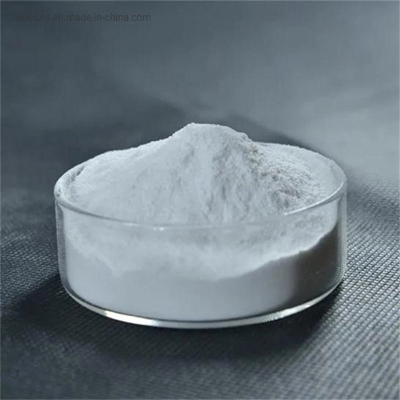Effects of plant extracts on the reproductive performance and immune performance of sows
-
Last Update: 2014-12-03
-
Source: Internet
-
Author: User
Search more information of high quality chemicals, good prices and reliable suppliers, visit
www.echemi.com
Effects of plant extracts on sows' reproductive performance and piglets' immune performance The use of antibacterial substances can improve the growth performance of animals, reduce the adhesion of pathogenic bacteria and the occurrence of diseases, thus improving the production performance of animals However, antibiotics as growth promoters have been widely concerned because of their toxic and side effects, antibiotic residues in meat products and the production of antibiotic resistant strains Plant extracts have been used in medicine because of their antibacterial activity, antiviral and fungal characteristics Dysentery herb extracts are obtained from leaves and flowers of origanaceae plants Its main functional components are more than 30 organic substances such as carvol and thymol Bilkei (1995) reported that the antidysentery herb extract additive can improve the health level of sows and has a positive effect on the activation of the immune system of sows after delivery Walter et al (2004) found that the proportion of lymphocyte differentiation group (CD) molecules, namely CD4 + (cell membrane containing THYMUS T lymphocytes differentiated into 4 glycoprotein clusters) and CD8 + (cell membrane containing THYMUS T lymphocytes differentiated into 8 glycoprotein clusters), fed with zhishicao extract additive, was higher than that of the control group, indicating that zhishicao extract additive can improve the immune ability of animals The additive of dysentery herb extract affects the performance of sow breeding, piglet growth and immunity 1 The effect of plant extract additive on sow's performance Because many research results show that the effect of dysentery herb or Origanum herb extract on the improvement of sow's performance is consistent, most of the research of plant extract additive in sow is focused on these two plant extracts Jin Lizhi (2010) summarized 7 publicly published research results, indicating that the extracts of dysentery herb or Origanum officinalis herb can not only promote the appetite and feed intake of sows, but also improve the reproductive capacity of sows (see Table 1) The results showed that the plant extract additive could improve the pregnancy rate and delivery rate of sows, increase the litter size of sows by 0.5 (range from 0.3 to 1.1), and increase the average free intake by 4% - 10% compared with the control group In one experiment, it was found that the plant extract additive did not increase the free intake of the first sows, but increased the intake of the second sows by 10% According to the latest research of the University of Minnesota, 70 sows of the second birth were randomly divided into two treatment groups within 24 hours after mating: control group (n = 35, corn soybean meal basic diet) and dysentery extract additive group (n = 35, control diet + 250mg / kg dysentery extract additive) The results showed that compared with the control group, the sows fed with zhishicao extract group had 0.8 live piglets per litter, and the average feed intake increased by 4.3% (see Table 2) Another large-scale study using 5000 sows showed that 250G / kg plant extracts (haoligo stim, Meriden, UK) added to the feed significantly increased the pregnancy rate, litter size and piglet daily gain (Justin et al., 2009) Khajarern et al (2002) believed that carvol and thymol in plant extracts could accelerate the renewal rate of intestinal villi surface epithelial cells, thus reducing the chance of pathogen adhesion to intestinal epithelial cells and promoting the absorption of nutrients Adding OS to weaned sows can significantly increase the body weight gain and the daily intake and lactation of lactating sows, but the mechanism of the effect of OS on the fertilization rate of sows is not fully understood The extract of dysentery herb (OS) can stabilize the intestinal flora, reduce the number of harmful microorganisms, improve the digestibility of feed, promote the health of animals, reduce the adverse effects of delayed immune response and the decrease of white blood cell activity in postpartum uterus, which is conducive to the activation of the postpartum immune system, better protect sows and prevent their genitourinary organs from infection Thus, the recovery of uterus can be increased Rapid recovery of the uterus can improve the delivery rate of the next child The anti-bacterial and anti-inflammatory effects of zhishicao extract can also reduce the incidence of perinatal diseases (MMA) and pig urogenital diseases (sugD) Table 2 Effect of adding dysentery herb extract to sow diet on sow breeding performance and piglet weight gain, energy and breast milk intake note: 1 EI is energy intake, EI (MJ / piglet) = average daily gain × 16.98mj (the first week) or 18.98mj (the next two weeks); 2 Breast milk intake (g / piglet) = EI / 4.723kj; 3 Data from Ariza et al (2011) 2 The effect of plant extract additive on the performance of piglets the growth potential of suckling piglets is great, but many factors restrict the development of this potential, and the intake of human milk is the most important one Ariza et al (2011) found that compared with the control group, the energy intake of sows fed with dysentery extract additive during pregnancy was higher from the first day to the fifth day (P < 0.05), and the breast milk intake of the piglets tended to increase (P = 0.10), and their average daily gain was also higher than that of the control group (P = 0.10) (see Table 2) The average daily gain (ADG), energy intake and breast milk intake (P = 0.07) of piglets fed with dysentery extract additive diet during lactation were higher from the 16th day to the 19th day The average daily gain (ADG) (see Figure 1), energy intake and breast milk intake of piglets fed with diet sows containing dysentery extract additive both during pregnancy and lactation were increasing (P = 0.08) (see Figure 2) Walter et al (2004) reported that when the piglets with growth retardation were fed a diet containing 180mg / kg carvol (plant extract), their daily gain was higher and feed conversion rate was better Gertenbach et al (2001) showed that adding 1000 mg / kg oregano to Weaned Piglets' diets could improve piglets' weight gain Nofrar í as et al (2006) and manzanilla et al (2006) found that adding 150mg / kg chemical synthesis of carvol to Weaned Piglets' diets had no effect on growth performance of piglets Fig 1 Effect of zhishicao extract on average daily weight gain of piglets (Ariza, 2011) Fig 2 Effect of zhishicao extract on breast milk intake of piglets (Ariza, 2011) 3 Effect of plant extract additive on IGF-1 level of piglets lactation can stimulate the rapid growth and development of intestinal tract of newborn piglets, while colostrum intake can stimulate the proliferation of crypt cells (Xu, 1996; Zhang et al., 1997) Insulin like growth factor-1 (IGF-1) and immunoglobulin are non nutritive components in colostrum, which can make intestinal tract grow faster (Xu et al., 1995; Zhang et al., 1998) Insulin like growth factor-1 has been detected in pig milk, and its concentration is higher in colostrum, usually more than twice that in maternal circulation (Simmen et al., 1988; Donovan et al., 1994) The intestinal epithelial cells of newborn piglets are permeable to the transport of macromolecular substances, thus allowing the absorption of immunoglobulins in colostrum This transport is non selective because virtually all macromolecules are absorbed when they come into contact with the intestinal mucosa The nonselective transport stopped 2D after the piglet was born (intestinal closure) However, IGF-1 can be absorbed into the blood circulation of newborn piglets, which is not affected by intestinal closure (Xu et al., 1995) The effect of zhishicao extract on the serum IGF-1 level of suckling piglets is shown in Table 3 Adding zhishicao extract additive to sows' diets can increase the serum IGF-1 concentration on the 1st, 7th and 14th day of lactation (the range is 8% - 14%), but the statistical difference is not significant due to the large standard error Compared with the control group, there was no significant difference in total energy, crude protein, fat ratio, total energy: crude protein, total energy: fat The number of T lymphocytes in the milk of sows fed with the diet containing dysentery extract additive increased significantly on the 14th day (P < 0.05) The number of T-lymphocytes in the milk of sows fed with diets containing dysentery extract additive was more, which indicated that dysentery extract had immunostimulatory effect Table 3 Effect of zhishicao extract on IGF-1 level in serum of suckling piglets 4 study on cellular immunity and humoral immunity of piglets with zhishicao extract IgG is the main immunoglobulin type in colostrum With the continuous lactation, the concentration of IgG in human milk gradually decreased, and IgA became the main immunoglobulin (Gaskins, 1998) IgA was produced by T and B lymphocytes IgA is synthesized by B lymphocytes When macrophages assist T lymphocytes to phagocytize antigens, T lymphocytes secrete cytokines to stimulate B lymphocytes to produce IgA (Gaskins, 1997) IgG is mainly related to the second antibody reaction, and IgA plays an important role in mucosal immunity The immune status of body fluid can be measured by detecting the total IgG and IgA concentration in serum of sows and piglets after ingesting colostrum for 24 hours The results showed that the IgG level of serum globulin in zhishicao extract group was increased by 2.9% [control group (56.53 ± 9.15) mg / ml; zhishicao group (58.19 ± 5.65) mg / ml), but there was no effect on IgA (Ariza et al., 2011) The immune cells are mainly lymphocytes and macrophages Lymphocytes exist as distinct groups with different functions and protein products (Calder, 1998) Lymphocytes are single cells of different shapes: T cells, B cells and NK cells T-lymphocytes are further divided into unique functional groups, which are defined as CD4 + cells and CD8 + cells according to the presence of CD4 and CD8 molecules on their surfaces (Kelly et al., 2000) The proportion of T-lymphocyte groups was different among different animals and between different individuals of the same kind of animals CD4 and CD8 molecules of T lymphocytes can be identified by antigen recognition, and these T lymphocytes are the main components of the acquired immune system (Cowley et al., 2005), playing a unique immune response to control antigens These molecules are mainly macrophages, dendritic cells and B cells, which can recognize antigen peptides on the surface of antigen-producing cells that are mainly suitable for the synthesis of protein attachment (kuby, 1997) In the lactation stage, the differentiation of T lymphocyte population changed significantly The number of CD4 + cells increased in the first week after birth, while the number of CD8 + cells was the least at birth, and increased moderately at 35-49 days (Gaskins, 1998) Ariza et al (2011) added dysentery herb extract additive to sows' diets to study the total number of T lymphocytes, the proportion of T lymphocyte groups, NK cell activity, the proportion of γ, δ - T lymphocytes, CD4 + lymphocytes and CD8 + lymphocytes in suckling piglets, as shown in Table 4 The ratio of T-lymphocyte, γ, δ - T-lymphocyte, CD4 +, CD8 + and natural killer (NK) cells increased from 6.5% to 46%, but the statistical difference was not significant Walter et al (2004) showed that the diet supplemented with essential oil of dysentery herb had nonspecific immunostimulatory effect on pig immune cells The proportion of CD4 + cells, CD8 + cells, MHC - Ⅱ + cells, non-T / non-B cells and CD4 + CD8 + double positive T-lymphocytes in peripheral blood lymphocytes and mesenteric lymph nodes in the feed group was significantly higher than that in the control group Compared with the control group, the proportion of CD4 + and CD8 + lymphocytes in the blood of the added group was significantly higher at the 4th and 7th week respectively (Walter et al., 2004), indicating that the additive of zhishicao extract can improve the cellular immune system of pigs
This article is an English version of an article which is originally in the Chinese language on echemi.com and is provided for information purposes only.
This website makes no representation or warranty of any kind, either expressed or implied, as to the accuracy, completeness ownership or reliability of
the article or any translations thereof. If you have any concerns or complaints relating to the article, please send an email, providing a detailed
description of the concern or complaint, to
service@echemi.com. A staff member will contact you within 5 working days. Once verified, infringing content
will be removed immediately.







